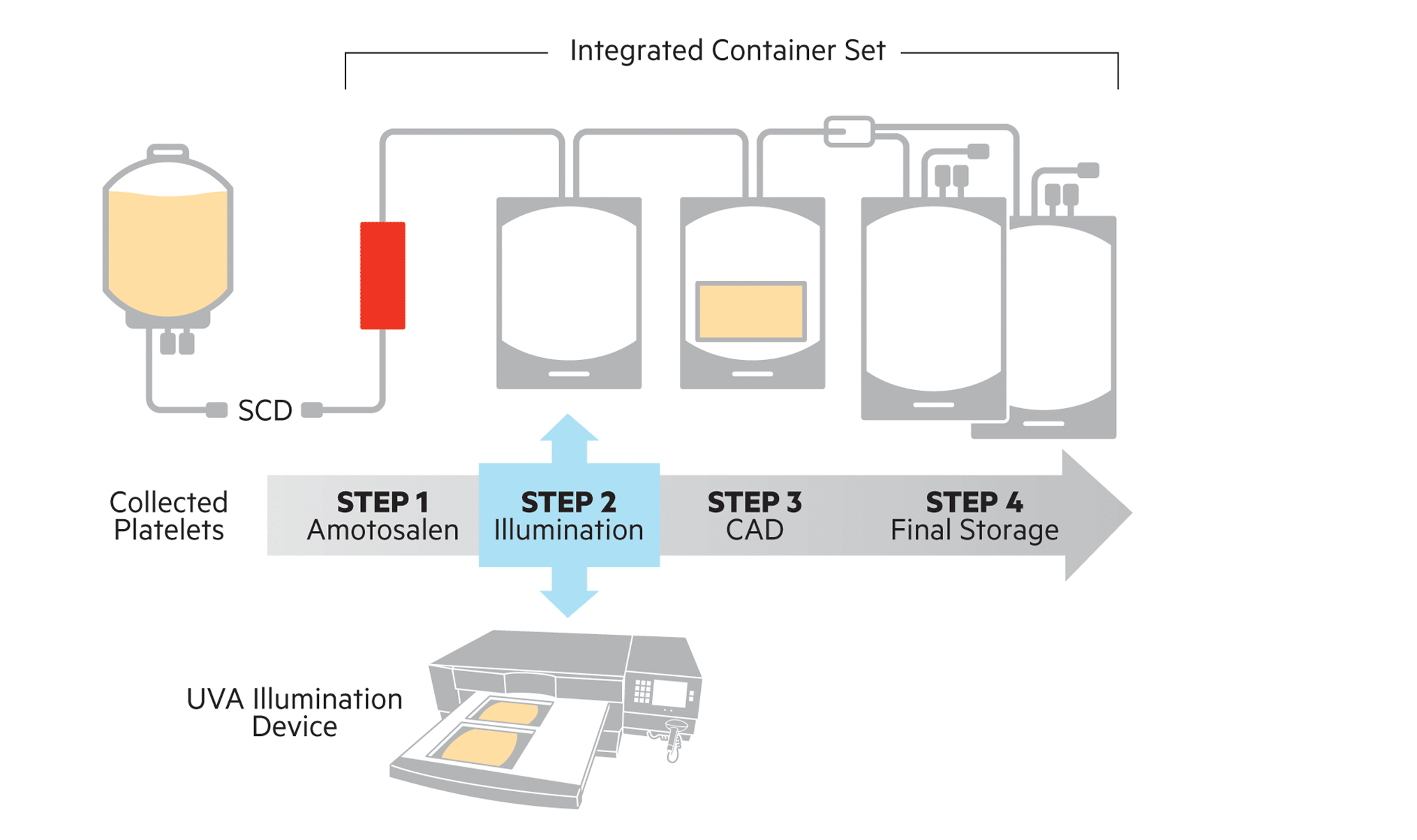Proven Safety and Efficacy
The INTERCEPT Blood System for Platelets Proven Safe and EffectiveRobust, Broad Spectrum Reduction
The INTERCEPT® Blood System for Platelets provides robust, broad spectrum reduction, reducing the risks of TTI, including sepsis, and as an alternative to gamma irradiation for prevention of TA-GVHD1
The safety and efficacy of INTERCEPT Platelets have been supported by hemovigilance programs and several clinical trials.
Demonstrated prevention
of septic reactions
in routine use
Hemovigilance (HV) programs provide a comprehensive view of transfusions and potential adverse events via the surveillance of blood donations in routine use settings. Over 700,000 INTERCEPT Blood System processed platelet units have been transfused in French, Swiss, and Belgian national HV programs, with no reported transfusion-transmitted infections or sepsis-related fatalities to-date.
| Conventional Platelets | INTERCEPT Platelets | |||
|---|---|---|---|---|
| HV Program | Units Transfused (n) | Transfusion Transmitted Infections (Fatalities) | Units Transfused (n) |
Transfusion Transmitted Infections |
| France2,3 2006-2019 | 3,098,000 | 53 (9) | 947,434 | 0 (0) |
| Switzerland4-6 2005-2019 | 156,719 | 16 (3) | 318,364 | 0 (0) |
| Belgium6,7 2009-2016 | 294,477 | 9 (0) | 291,879 | 0 (0) |
| Total | 3,549,196 | 78 (12) | 1,557,677 | 0 (0) |
Clinical Trials
The INTERCEPT Blood System has been evaluated in numerous clinical trials comprised of nearly 1000 subjects that received INTERCEPT Platelets. Primary endpoints were met in the controlled, randomized clinical trials, including corrected count increments (CCI) and bleeding criteria, both of which are measures of hemostatic efficacy. The frequency of acute transfusion reactions (ATRs) was assessed in three observational studies.
| Study Description | Patients | Design | Primary Endpoint | Primary Endpoint Met? |
|---|---|---|---|---|
| Viability of INTERCEPT Platelets, clearance of amotosalen, healthy patients8,9 | 65 | Randomized, single-blind, cross-over | Recovery/survival, clearance of amotosalen | |
| Safety/efficacy of INTERCEPT Platelets, thrombocytopenic patients10 | 645 | Randomized, double-blind, parallel | WHO Grade 2 bleeding | |
| Safety/efficacy of INTERCEPT Platelets, thrombocytopenic patients11 | 43 | Randomized, double-blind, parallel | 1 hour CCI | |
| Safety/efficacy of INTERCEPT Platelets, thrombocytopenic patients12 | 32 | Randomized, double-blind, cross-over | Bleeding time | |
| Safety of INTERCEPT Routine setting13 | 51 | Single-arm, open label | Frequency of acute transfusion reactions was 1.6% |
|
| Safety of INTERCEPT Routine setting14 | 46 | Single-arm, open label | Frequency of acute transfusion reactions was 2% | |
| Safety of INTERCEPT Routine setting1 | 169 | Single-arm, open label | Frequency of acute transfusion reactions was 2.4% | |
You May Also Be Interested In
1. The INTERCEPT Blood System for Platelets Package Insert, Cerus Corporation; May 28, 2019. 2. Cazenave, JP, H Isola, et al., Pathogen Inactivation of Platelets, in Platelet Transfusion Therapy, AABB Press: Bethesda, MD 2013; 19-176 3. French National Agency for Medicine and Health Product Safety/ANSM, Hemovigilance Activity Reports, 2009–2019. 4. SwissMedic Haemovigilance Annual Reports, 2005–2019. 5. Jutzi M. et al. Transfus Med Hemother 2018;45:151-6. 6. Benjamin RJ, et al Hemovigilance monitoring of platelet septic reactions with effective bacterial protection systems. Transfusion 2017;57:2946-57. 7. AFMPS Hémovigilance Rapport annuel: Belgium. 2016. 8. Snyder E et al. Transfusion 2004;44:1732-1740. 9. Corash L et al. Transfusion 2000;40(S10):137. 10. McCullough et al. Blood 2004;104(5):1534-1541. 11. Janetzko et al. Transfusion 2005;45:1443-1452. 12. Slichter SJ et al. Transfusion 2006;46:731-740.1 13. Schlenke P et al. Ann Hematol 2011;90(12):1457-1465. 14. Infanti L et al. Transfus Apher Sci 2011;45(2):175-181.



